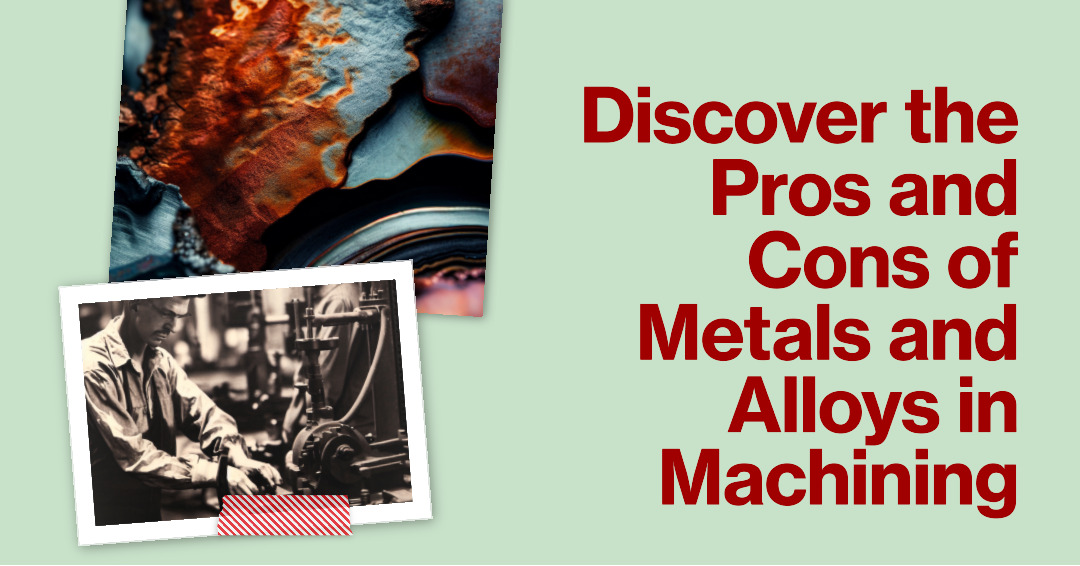Introduction
Since the dawn of human civilization, metals have been pivotal in shaping our progress. They have been the backbone of countless industries, propelling technological advancements and pushing the boundaries of what we thought was possible. As we delved deeper into the realm of metallurgy, we discovered alloys, which are ingenious combinations of two or more metals. These alloys have propelled the potential of manufacturing to new heights.
In the specific context of machining, an in-depth understanding and appreciation of the properties of metals and alloys are indispensable. In this comprehensive article, we will delve into the advantages and disadvantages of various metals and alloys in machining processes. Our goal is to provide a thorough understanding to help manufacturers make optimal decisions.
Properties of Metals
Metals, in their fundamental form, boast unique mechanical, thermal, and electrical properties. These properties are what make them so versatile and useful across a broad spectrum of applications. Let's explore the properties of a few prominent metals:
- Iron: Iron is famed for its magnetic properties. This makes it a favorite in the construction industry where it's employed in various ways, from building infrastructures to manufacturing tools.
- Copper: This metal is an outstanding conductor of electricity. Because of this, it finds extensive application in electrical wiring across various industries, from electronics to automotive.
- Aluminum: Known for its light weight and corrosion resistance, aluminum is a popular choice in the aerospace and automotive industry. Its lightweight nature enables the building of high-speed vehicles and aircraft, while its corrosion resistance ensures durability.
Properties of Alloys
By introducing other elements to a metal, we can significantly alter and enhance its properties. This capability has led to the creation of a myriad of alloys, each with its unique set of properties. Here are a few common alloys and their properties:
- Stainless Steel (Iron + Carbon + Chromium): This alloy is famous for its exceptional resistance to corrosion. This makes stainless steel a mainstay in various industries, from cutlery to surgical instruments, and construction to automotive.
- Bronze (Copper + Tin): Bronze offers superior hardness compared to pure copper. This makes it suitable for numerous specialized applications such as in the manufacturing of bearings, springs, and bells.
- Brass (Copper + Zinc): Brass is a golden-colored alloy that's often utilized for decorative purposes and musical instruments. It's also highly machinable, making it an excellent choice for precision components.
Advantages and Disadvantages in Machining
When subjected to machining processes, different metals and alloys present their unique set of advantages and disadvantages. Let's delve into the pros and cons of a few commonly machined materials:
Steel
Advantages:
- Steel boasts remarkable durability and can handle high-stress situations, making it a suitable choice for heavy-duty applications.
Disadvantages:
- Steel's hardness can be a double-edged sword. While it provides durability, it can also quickly wear out cutting tools, leading to increased tooling costs.
Aluminum
Advantages:
- Aluminum is soft, making it easy to machine.
- Its lightweight nature makes it ideal for applications where weight reduction is crucial, such as in aerospace and automotive components.
Disadvantages:
- Aluminum's softness also makes it prone to scratches and dents, requiring careful handling during machining processes.
Brass
Advantages:
- Brass machines smoothly, resulting in efficient machining processes and high-quality surface finishes.
- It also requires less power compared to steel, reducing energy consumption and therefore, operational costs.
Disadvantages:
- Brass is relatively more expensive than many other metals. This can impact the cost-effectiveness of the manufacturing process, especially for large-volume production runs.
Conclusion
Choosing the appropriate metal or alloy for a machining project involves careful consideration of numerous factors. These factors include the material properties, cost, and the desired outcomes of the project. By understanding the advantages and disadvantages associated with each metal or alloy, manufacturers can make informed decisions that optimize both quality and efficiency.
Key Takeaways
- Metals and alloys are indispensable in machining processes, each offering unique properties.
- These properties influence their machining advantages and disadvantages, impacting the final product's quality and the manufacturing process's efficiency.
- Factors such as durability, hardness, weight, cost, and ease of machining should be considered when selecting materials for machining projects.
FAQ
Q: What are the advantages of using steel in machining?
A: Steel is highly durable and can withstand high-stress applications, making it a suitable choice for demanding machining applications.
Q: What are the disadvantages of using aluminum in machining?
A: While aluminum is easy to machine and lightweight, it is prone to scratches and dents. This necessitates careful handling during machining processes to maintain product quality.
Q: Why is brass more expensive than other metals in machining?
A: Brass is more expensive due to the cost of its constituent elements, copper and zinc. However, it offers efficient machining properties, which can help reduce energy consumption during the process.


2 Replies to “Comprehensive Analysis of Metals and Alloys: A Deep Dive into the Advantages and Disadvantages of Various Metals and Alloys in Machining”